The Great Ukiyo-e Artist Katsushika Hokusai
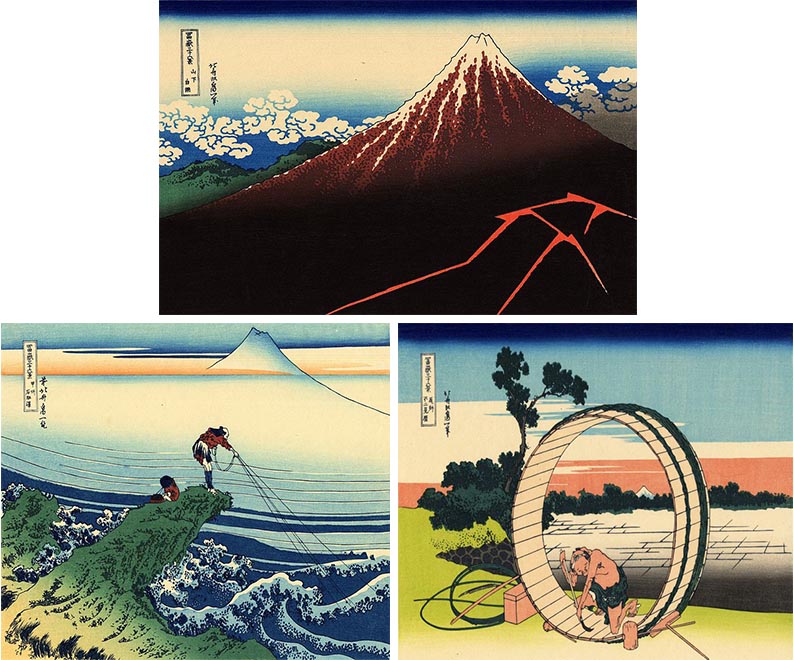
Katsushika Hokusai is one of the most famous artists in Japan, active mainly as an Ukiyo-e artist in the late Edo period. He left behind many masterpieces, including “Fugaku sanju-rokkei” (Thirty-six Views of Mount Fuji), which are highly acclaimed both in Japan and abroad.
Biography of Katsushika Hokusai
Childhood (1760-1778)
Katsushika Hokusai was born in 1760 in Edo, Japan (present-day Sumida-ku, Tokyo). His real name was Kawamura Tokitaro, and he later changed his name to Tetsuzo. He was a boy who loved painting and has drawn pictures since he was young.
Period of training as an Ukiyo-e artist (1778-1793)
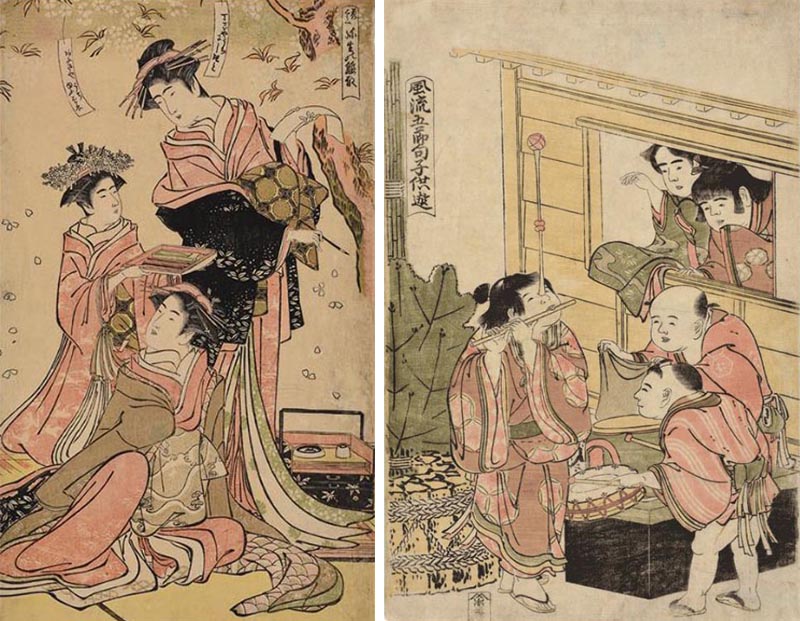
In 1777, Hokusai became a pupil of Katsukawa Shunsho, an Ukiyo-e artist, and started his training as an Ukiyo-e artist. Although he showed some promise at this time, his works did not have a strong impact. Compared to his later career, it seems to be lacking in personality.
Fame as a Ukiyo-e Artist (1793-1833)
Katsushika Hokusai, who used various painting titles, became independent in 1793 and took the name “Sori” from 1795 to around 1804, “Katsushika Hokusai” from 1805 to 1809, and “Tameichi” from 1820 to 1833.
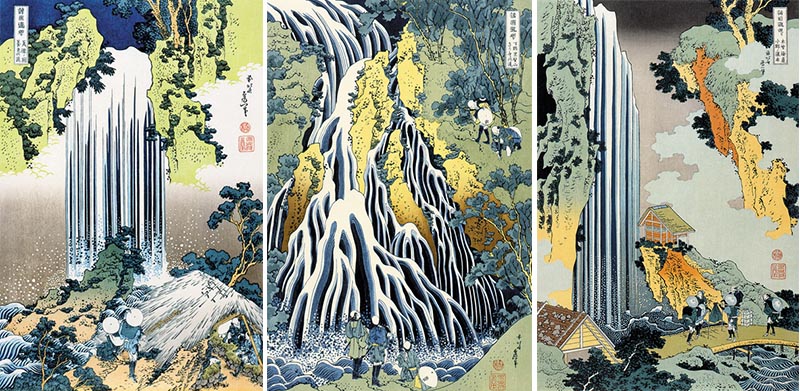
During this period, Hokusai produced a series of works that would later become his masterpieces, such as “Thirty-six Views of Mount Fuji (Fugaku Sanjurokkei)” and “A Tour of the Waterfalls of the Provinces (Shokoku taki meguri)”, and his fame as an Ukiyo-e artist grew steadily.
Late-Year Activities (1834-1849)
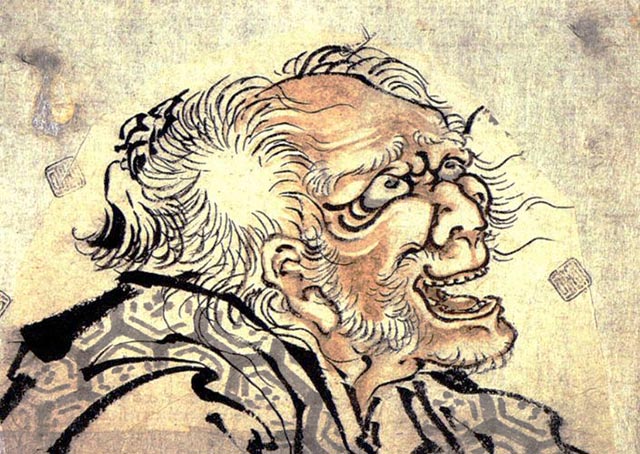
In his later years, Hokusai called himself “Gakyojin Hokusai” (The mad painter Hokusai). He continued to work energetically even in his later years, mainly by hand or original paintings, and his subjects included natural objects and religion. He ended his life in 1849. He had a great impact not only on the Ukiyo-e world but also on the entire art world.
Katsushika Hokusai’s masterpiece
Thirty-six views of Mt. Fuji (Fugaku Sanjurokkei)
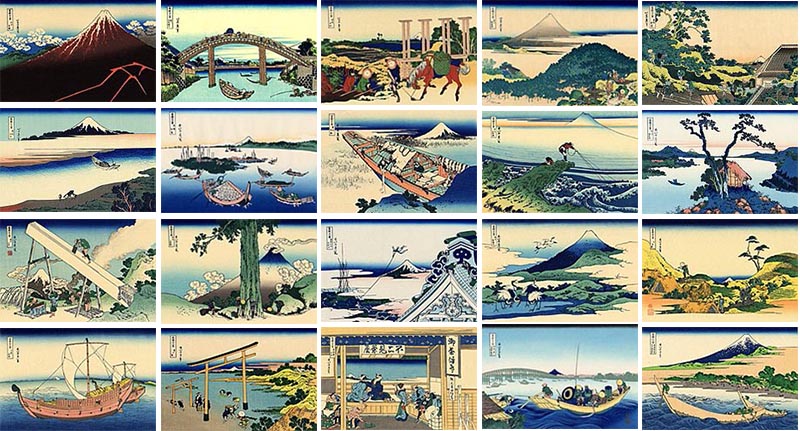
The Great Wave off Kanagawa (Kanagawa Okinamiura)
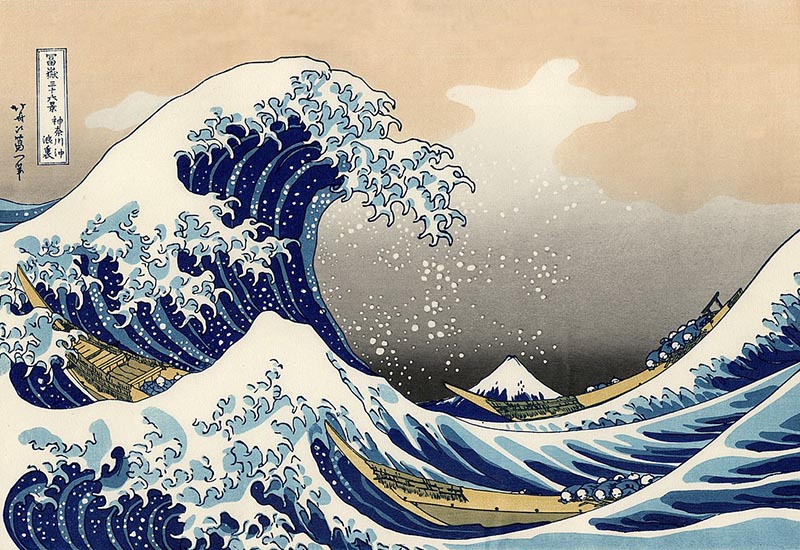
Fine Wind, Clear Morning (Gaifū kaisei,Red Fuji)
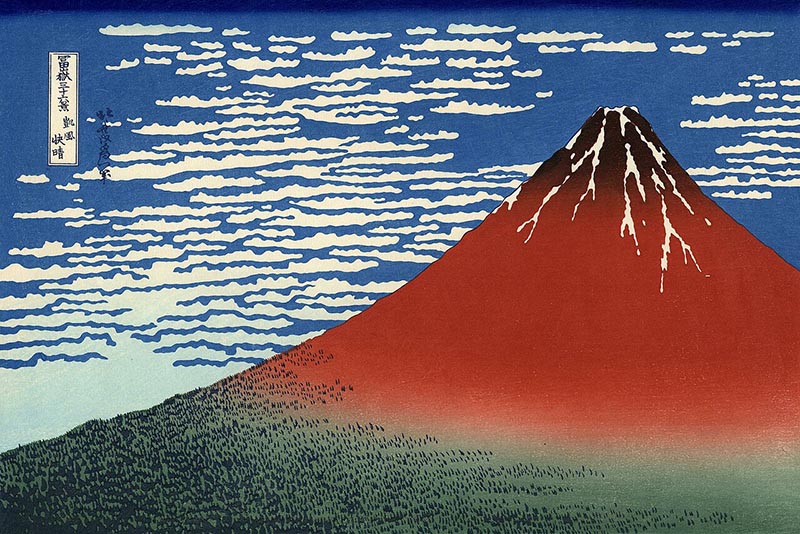
Popularity and Features of Katsushika Hokusai
Capturing the Needs of the Times
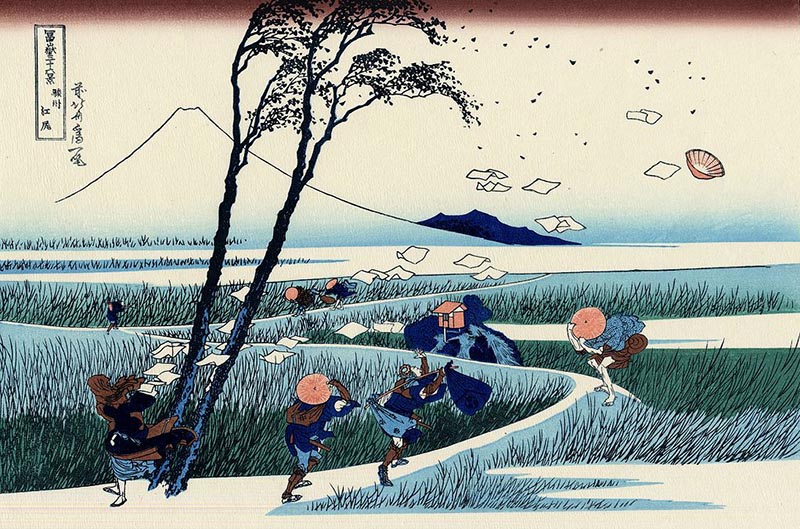
Many of Katsushika Hokusai’s works reflect the lives of common people. Sceneries longed for by the common people, such as “Fugaku Sanju-rokkei” (Thirty-six Views of Mount Fuji) and “Kanagawa Okinamiura” (Under the Wave off Kanagawa), as well as scenes depicting the daily lives of the common people, were popular among the people of Edo. Hokusai’s style varied from realistic to deformation and exaggeration, but all of them precisely met the needs of the times.
Trying something new
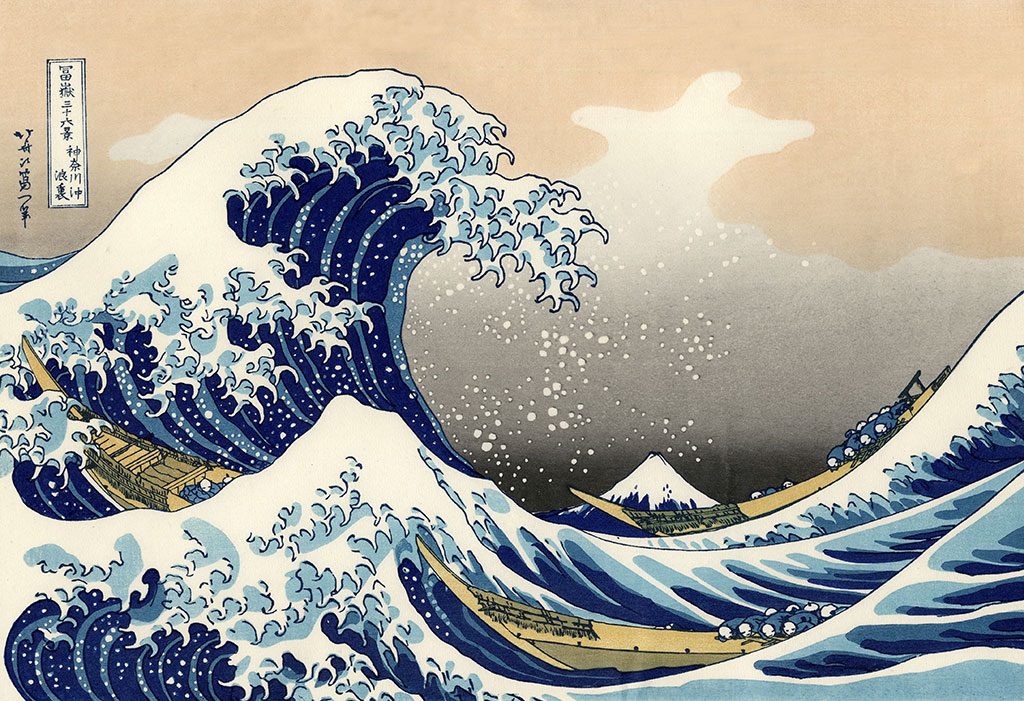
Katsushika Hokusai observed the lives of common people in detail, and kept up-to-date with the latest techniques in the way he expressed them. For example, in his work “Kanagawa Okinamiura”, Hokusai boldly deformed the landscape as seen in real life, and the influence of Western paintings can be clearly seen in his laws of perspective and shadow method. His Ukiyo-e, with their highly innovative design, were surprising the people of Edo at the time.
Continuous Evolution
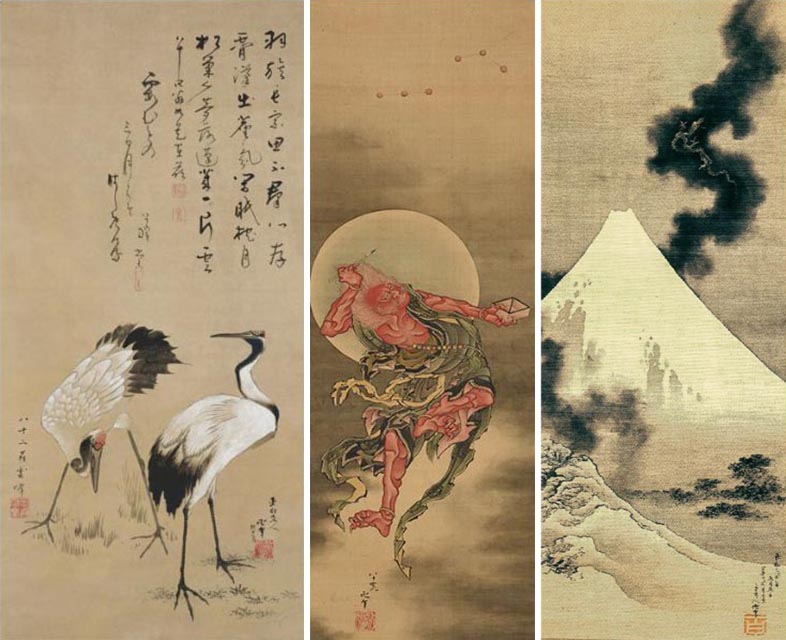
Katsushika Hokusai is known as a prolific artist. It is said that he produced tens of thousands works during his lifetime. He continued to challenge himself to new things and continued to create energetically even in his later years, until his death.
Originality that can be seen in modern design
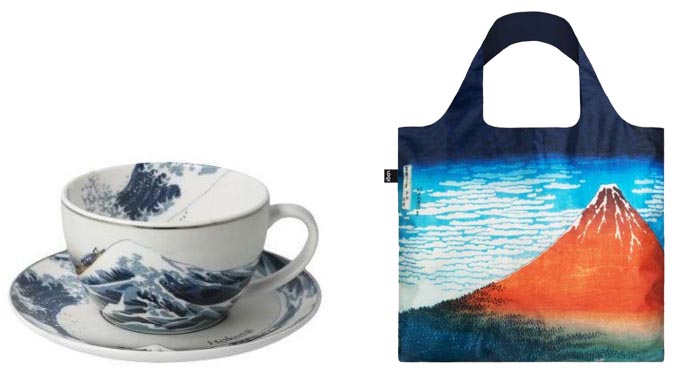
Katsushika Hokusai’s works are imitated in various fields even today, and many works have been created in respect of Hokusai. His works, which are beautiful even from the point of view of a modern design perspective, perfectly capture the hearts and minds of modern people, and prints of his masterpieces are popular all over the world.
Katsushika Hokusai’s influence and his reputation
Hokusai’s reputation in Japan
In Japan, Katsushika Hokusai is widely recognized as the undisputed master of Ukiyo-e. Many of his works, including the internationally acclaimed “Fugaku Sanju-rokkei” (Thirty-six Views of Mount Fuji), are in the collections of Japanese museums and are also collected by avid Japanese collectors.
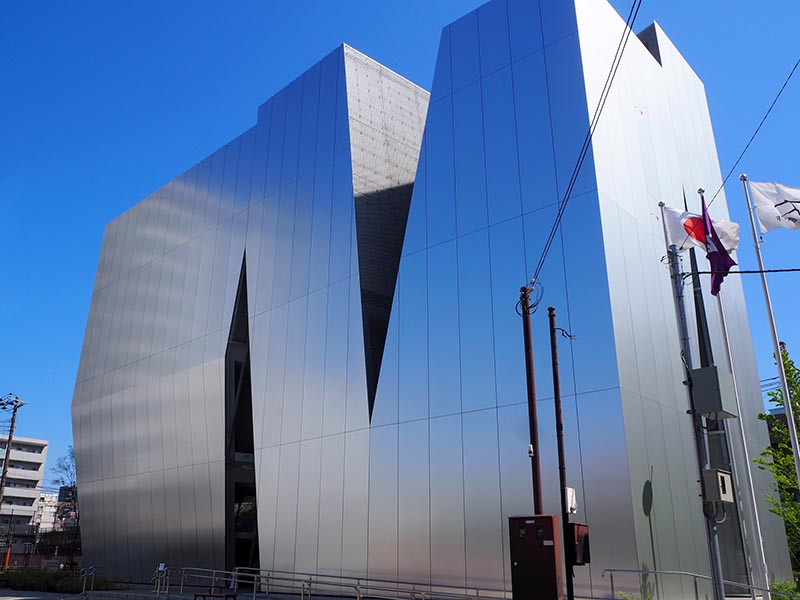
In Sumida-ku, Tokyo, the birthplace of Hokusai, there is the “Sumida Hokusai Museum”, which exhibits Hokusai’s masterpieces and many of his works.
In Obuse-machi, Kamitakai-gun, Nagano, where Hokusai spent the last years of his life, there is the “Hokusai Museum”, which houses many of Hokusai’s paintings.
Both museums are valuable facilities where visitors can learn about Hokusai’s life and they are familiar to many Japanese people.
Overseas Recognition of Hokusai
Katsushika Hokusai is widely recognized overseas, especially as a representative painter of “Japonism”. His original and bold style of painting had a great influence on famous Western artists.

Japonism was very popular in France in the late 19th century, and the French painter Claude Monet was greatly influenced by Katsushika Hokusai’s “Kanagawa Okinamiura” (Under the Wave off Kanagawa), which he incorporated into his own work. It is said that Vincent van Gogh collected more than 400 Ukiyo-e prints, and the influence of Katsushika Hokusai’s chrysanthemum flower design can be seen in Van Gogh’s masterpiece “Sunflowers”.
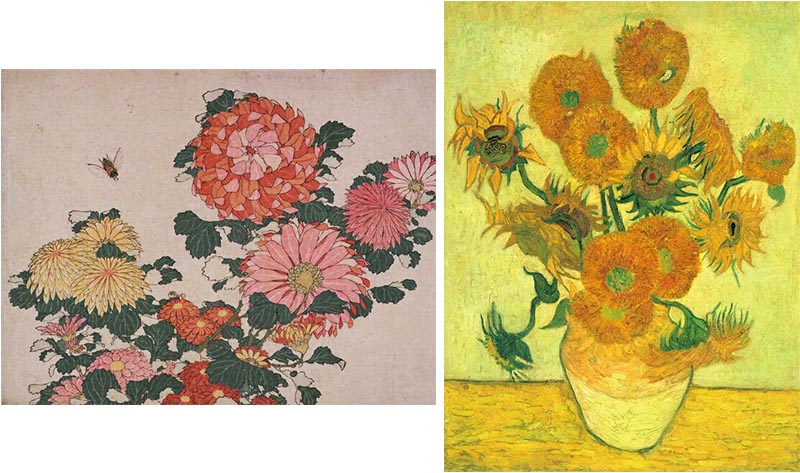
Katsushika Hokusai was a driving force behind the Japonism boom and had a great influence on artists overseas, and his work is highly regarded by museums overseas, many of which have his works in their collections.
The fact that his works are traded at a high price supports his popularity.
Summary of Katsushika Hokusai
The works of Katsushika Hokusai, an Ukiyo-e artist active in Japan’s Edo period, have been loved throughout the ages for his ability to accurately capture universal themes and his bold compositions with impact.
The vitality of Katsushika Hokusai, who constantly sought out new things in the spirit of “Dare to do what others don’t”, continues to inspire and motivate us today.
In Japan, there are two museums that specialize in the works of Katsushika Hokusai. Please come and see Hokusai’s works with your own eyes.



